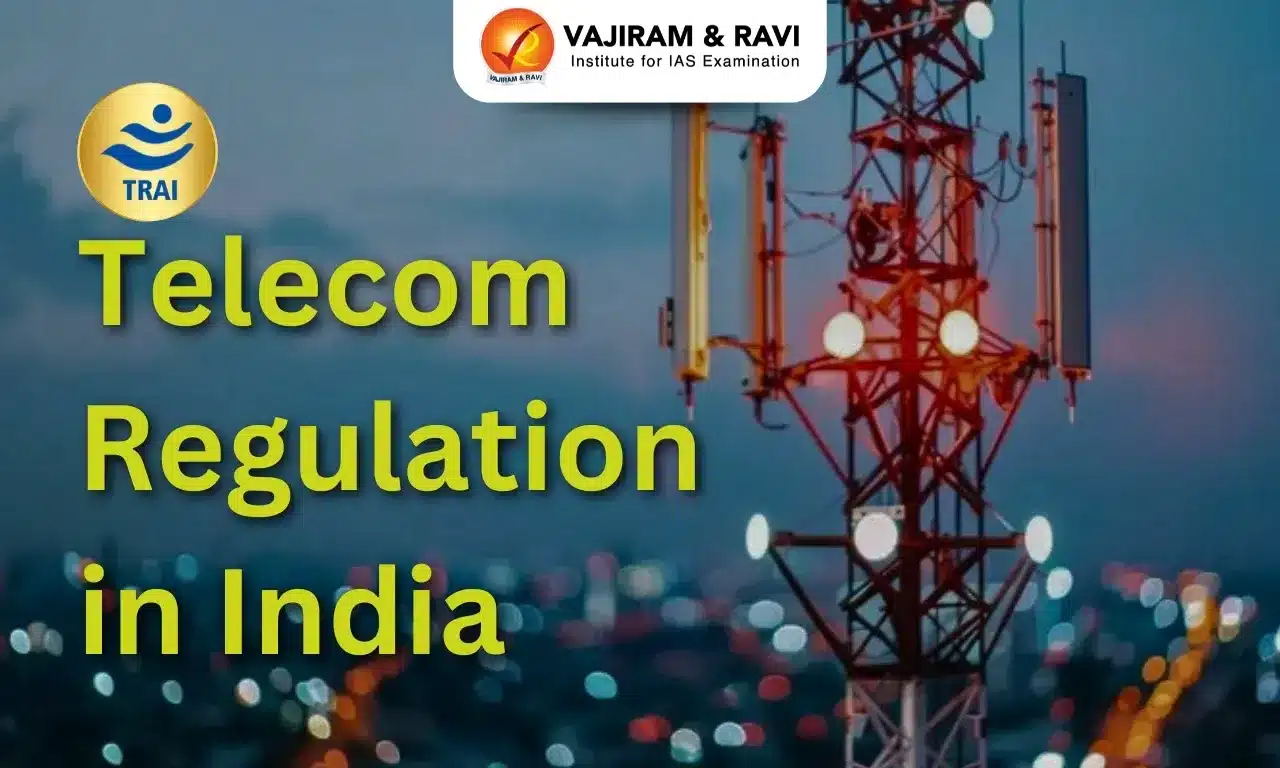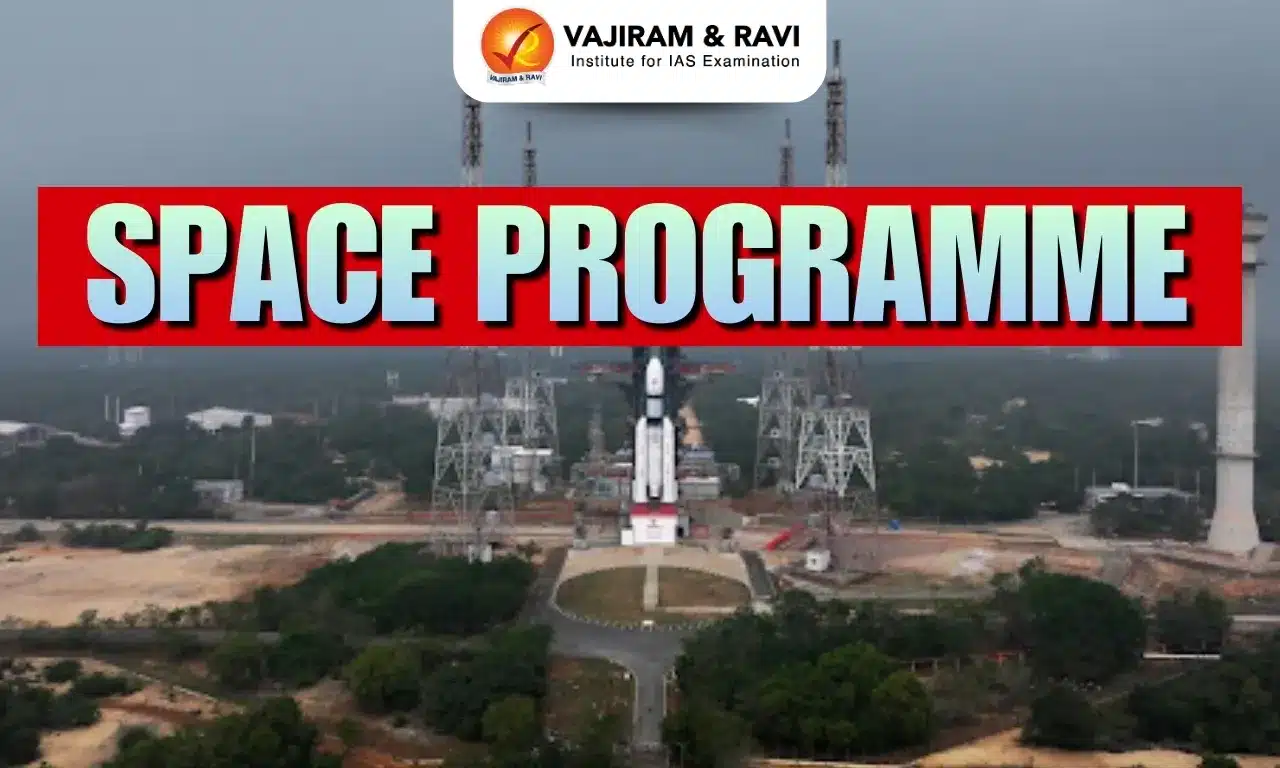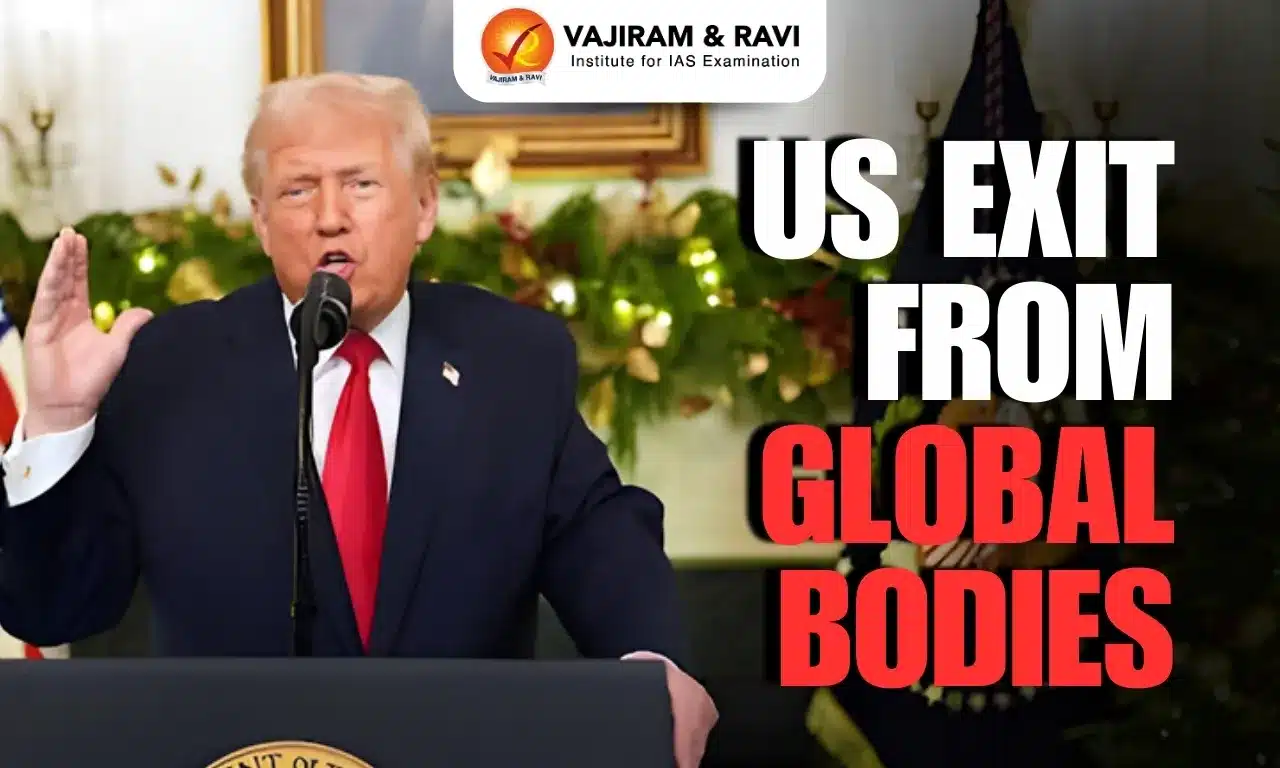What’s in today’s article?
- Background
- About Telecom Regulatory Authority of India (TRAI)
- What is Blockchain Technology (BCT)?
- Difference Between Typical Database and BCT
- How Does BCT Work?
- TRAI’s Role in Combating Spam
- Effectiveness of Measures
- Way Forward
Background
- Unsolicited Commercial Communications (UCC), commonly known as spam, has become a significant challenge in India, ranging from irritating marketing messages to fraudulent schemes targeting financial information.
- To counter this growing menace, the Telecom Regulatory Authority of India (TRAI) and the Department of Telecommunications (DoT) have implemented several measures, leveraging advanced technologies like blockchain and expanding public reporting systems.
About Telecom Regulatory Authority of India (TRAI)
- The entry of private service providers brought with it the inevitable need for independent regulation.
- The Telecom Regulatory Authority of India (TRAI) was, thus, established by an Act of Parliament, called the Telecom Regulatory Authority of India Act, 1997.
- TRAI’s mission is to create and nurture conditions for growth of telecommunications in the country in a manner and at a pace which will enable India to play a leading role in emerging global information society.
- Objectives:
- To regulate telecom services, including fixation/revision of tariffs for telecom services which were earlier vested in the Central Government.
- One of the main objectives of TRAI is to provide a fair and transparent policy environment which promotes a level playing field and facilitates fair competition.
- In pursuance of above objective TRAI has issued from time to time a large number of regulations, orders and directives to deal with issues coming before it.
What is Blockchain Technology (BCT)?
- Blockchain is a type of decentralised database in which transactions are recorded with an immutable cryptographic signature called a hash.
- This decentralised database is managed by multiple participants and it is known as Distributed Ledger Technology (DLT).
- The goal of blockchain is to allow digital information to be recorded and distributed, but not edited.
- In this way, a blockchain is the foundation for immutable ledgers, or records of transactions that cannot be altered, deleted, or destroyed.
- Blockchains are best known for their crucial role in cryptocurrency systems, such as Bitcoin, for maintaining a secure and decentralized record of transactions.
Difference Between Typical Database and BCT
- The key difference between a typical database and a blockchain is how the data is structured.
- A database usually structures its data into tables, whereas a blockchain, like its name implies, structures its data into chunks (blocks) that are strung together.
- This data structure inherently makes an irreversible time line of data when implemented in a decentralized nature.
How Does BCT Work?

Applications of BCT
- Apart from cryptocurrency, there are numerous other real-life applications of blockchain technology, such as:
- Money transfer, Lending, Insurance, Secure personal information, Voting, Government scheme benefits, Securely share medical information , Artist royalties, etc.
TRAI’s Role in Combating Spam
- TRAI has been instrumental in regulating and minimizing spam through various initiatives:
- Do-Not-Disturb (DND) Registry:
- Introduced in 2007, the registry allows telecom customers to block spam calls and messages by registering their preferences.
- Telemarketers violating DND rules face warnings and eventual blacklisting under the Telecom Commercial Communication Customer Preference Regulation (TCCCPR), 2018.
- In 2024, DND reporting was mandated across all telecom provider apps for easier user access.
- Blockchain-Based Solutions:
- TRAI mandated telecom companies to use blockchain for maintaining an updated list of approved SMS senders and formats.
- Blockchain ensures data immutability, making it difficult for unauthorized entities to bypass regulations.
- In 2024, these rules were further tightened to enhance traceability, requiring telcos to maintain a complete record of sender credentials before messages are transmitted.
- Monitoring International and Fraudulent Spam:
- Fraudulent spam calls, often originating from disposable VoIP numbers, remain a challenge due to their ability to appear as legitimate international traffic.
- TRAI is working to tackle these issues through enhanced real-time monitoring.
Technological Interventions
- Sanchar Saathi Portal:
- Developed by the DoT, the portal includes Chakshu, which enables citizens to report fraudulent calls and messages.
- The government has deactivated thousands of unauthorized telemarketers’ numbers through this initiative.
- Telecom Security Operation Centre:
- Operates in New Delhi, monitoring suspicious internet traffic in real time to detect and curb spam and scam activities.
- AI-Powered Detection:
- Telecom companies like Airtel have adopted Artificial Intelligence to label suspicious calls as “Suspected Spam” and flag international calls, aiding users in identifying potential risks.
Effectiveness of Measures
- Successes:
- Reduction in spam communications from legitimate businesses complying with regulations.
- Enhanced traceability of commercial messages through blockchain and sender ID systems.
- Challenges:
- The dynamic nature of spam, with scammers constantly evolving tactics.
- Rise in fraudulent calls and financial scams, especially from disposable numbers.
- Difficulty in enforcing regulations on international spam traffic.
Way Forward
- To address the evolving nature of spam, TRAI and the government can adopt additional measures:
- Strengthen VoIP Monitoring:
- Collaborate with global VoIP service providers to regulate and authenticate international traffic.
- Public Awareness Campaigns:
- Educate users about reporting mechanisms and safe practices to avoid scams.
- Expanded AI Integration:
- Scale up AI-based spam detection across all telecom providers for real-time monitoring and identification.
- Stronger Penalties:
- Impose stricter penalties on violators to deter spam operations.
- Public participation through reporting tools like Sanchar Saathi remains essential in ensuring the success of these measures.
Q1. How big is the telecommunication industry in India?
The Telecom industry in India is the second largest in the world with a subscriber base of 1.179 Bn as of August 2023 (wireless + wireline subscribers).
Q2. How do satellite phones work?
A satellite phone has an omnidirectional or directional antenna that is used for both transmitting and receiving signals. In order to receive a signal for service, most satellite phones require a line-of-sight with the sky.
Source :TH
Last updated on January, 2026
→ Check out the latest UPSC Syllabus 2026 here.
→ Join Vajiram & Ravi’s Interview Guidance Programme for expert help to crack your final UPSC stage.
→ UPSC Mains Result 2025 is now out.
→ UPSC Notification 2026 is scheduled to be released on January 14, 2026.
→ UPSC Calendar 2026 has been released.
→ UPSC Prelims 2026 will be conducted on 24th May, 2026 & UPSC Mains 2026 will be conducted on 21st August 2026.
→ The UPSC Selection Process is of 3 stages-Prelims, Mains and Interview.
→ Prepare effectively with Vajiram & Ravi’s UPSC Prelims Test Series 2026 featuring full-length mock tests, detailed solutions, and performance analysis.
→ Enroll in Vajiram & Ravi’s UPSC Mains Test Series 2026 for structured answer writing practice, expert evaluation, and exam-oriented feedback.
→ Join Vajiram & Ravi’s Best UPSC Mentorship Program for personalized guidance, strategy planning, and one-to-one support from experienced mentors.
→ UPSC Result 2024 is released with latest UPSC Marksheet 2024. Check Now!
→ UPSC Toppers List 2024 is released now. Shakti Dubey is UPSC AIR 1 2024 Topper.
→ Also check Best UPSC Coaching in India

















